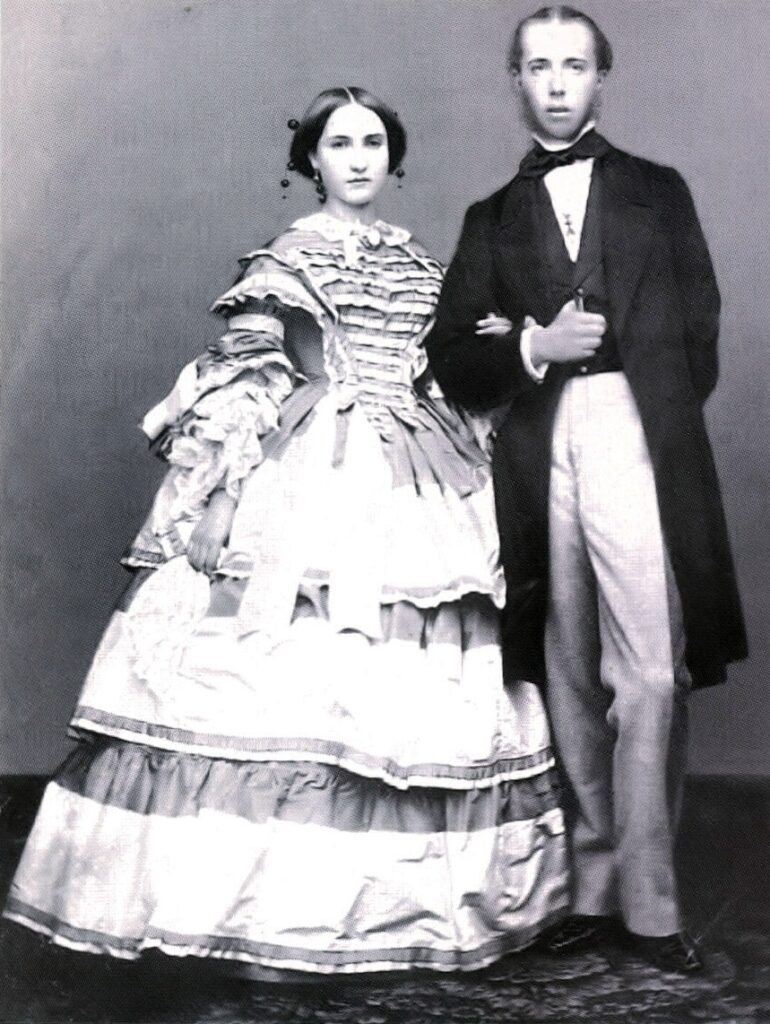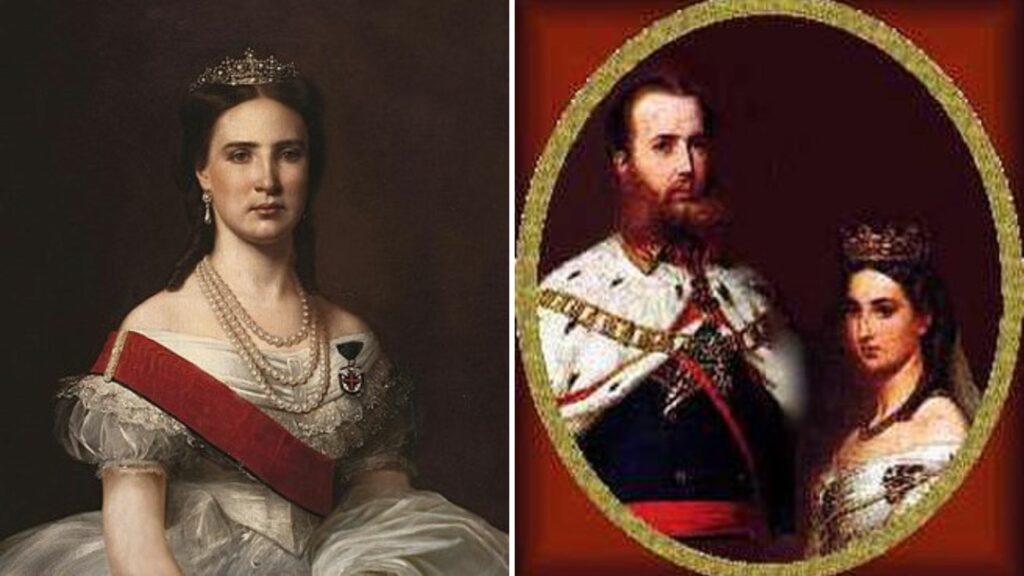A new book about the life of Princess Charlotte of Belgium, who for a brief moment was Empress of Mexico, has been written by Belgian author Kristen Dieltiens. The story recounts the adventurous life of the daughter of Belgium's first king Leopold I. She was the younger sister of Leopold II.
Speaking to Gazette van Antwerpen, Dieltens describes the "extremely strict" upbringing of the young princess, whose worth as a woman was much limited by the narrow interpretation of Catholicism to which the royal family prescribed. She was barely 17 when in 1857 she married Maximilian of Austria, brother of Emperor Francis Joseph, who became Grand Duke of Lombardy-Venetia, but who was a weak leader.

Charlotte of Belgium and her fiancé Archduke Maximilian of Austria. Photography by Louis-Joseph Ghémar, 1857
Their marriage fit the designs of Napoleon III of France and Pope Pius IX, who sought to control Mexico and "get rid of President Benito Juarez, who refused to repay his European debts." The European powers installed Maximilian as head of an empire.
The naive young couple went along with the imperial dream, living in grandeur in Mexico City. They resided in a beautiful castle and held monthly balls. "But Maximilian would rather go butterfly hunting and chasing women than rule, so Charlotte did it in his place."
Only woman to stay in the Vatican
Yet Juarez didn't simply allow the European heads of state to govern the country; he mounted an offensive from the north, and Rome and Paris didn't send the support they had promised. As a result, Charlotte returned to Europe from Mexico to plead their case.
But rather than provide costly military forces, the European superpowers decided to abandon their ambitions in Mexico. Displeased with this response, Charlotte refused leave the Vatican until her demands were met and was provided with a bed in the holy library. To this day, she is the only woman ever to spend the night in the Vatican. The Pope wrote to her brother Philip: "Come and get her, she is crazy."
Charlotte is remembered as a madwoman yet this version of events overlooks more interesting circumstantial details. "She was convinced that someone wanted to kill her," said Dieltiens. "Though there were fits of madness, I think that's too strong a word. She had strong mood swings and was possibly bipolar." Charlotte also had periods of psychosis that medicine at the time could not treat.
Locked up by her family
Charlotte never returned to Mexico as she was imprisoned by her family in a villa in Trieste, Italy. From her confinement, she wrote letters to her husband Maximilian, who had been shot by Juarez. Nobody informed her and the estranged princess was relocated to Bouchout Castle (in Meise, Flemish Brabant) where she stayed until her death aged 86.
Dieltiens tells of how her commitment to her husband remained, to the point that she kept a life-sized doll dressed in his military uniform in her room. Her happiest times were said to be visits from Albert, the son of her brother Philip who was later to be king. She played the piano, painted watercolours and did embroidery.
Related News
- Royal life: Queen Mathilde celebrates her 50th birthday
- Belgian Royal Family to travel to Greece for funeral of Constantine II
- The life of Constantine II, Greece's last monarch
Once a day she was allowed to make a round in the carriage on the castle grounds, but always under supervision. Dieltiens explains that her imprisonment is explained by the fact that the princess carried a secret that should not be revealed, but which is uncovered in the book.
The author hopes that the new book will change Charlotte's historic legacy. "She was more intelligent than her husband, at a time when that wasn't allowed. I was annoyed that she was being derided for doing the work her husband neglected. I wrote her story so that Charlotte gets the place she deserves in our history."
'Carlota, the woman who ate roses' is published in Dutch by Borgerhoff & Lamberigts.

